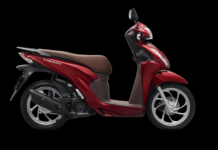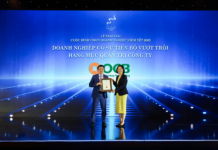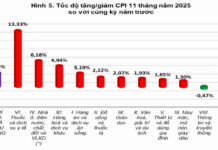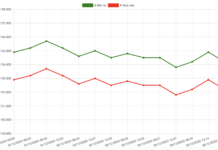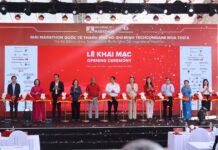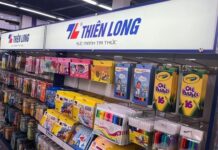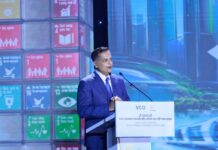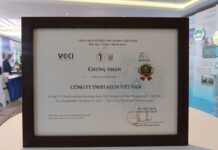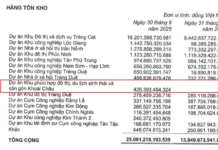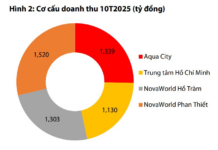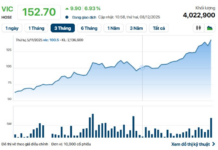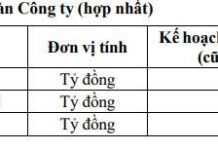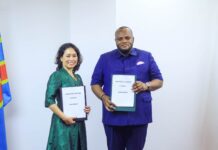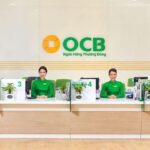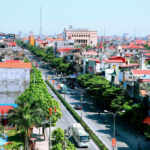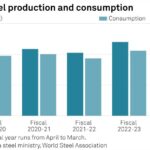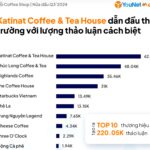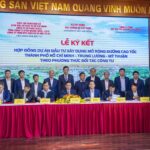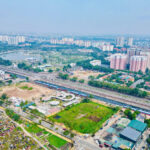With the theme “ASEAN – Gateway to World Economic Integration,” the conference highlighted the immense potential of the ASEAN region, the main drivers propelling its continuous growth through foreign direct investment, innovation in sustainable development, and supply chain management.
The conference also discussed growth and investment opportunities for companies operating within ASEAN or connected to the region, especially in Vietnam, a highly potential investment destination in the region and a gateway for businesses looking to invest and expand in the area.
Vietnam: ASEAN’s Gateway, Ho Chi Minh City Welcomes FDI
In his opening remarks, Mr. Victor Ngo, CEO of UOB Vietnam, shared the Asian Development Bank’s forecast that ASEAN could achieve a growth rate of 5% in 2024. With its continuous growth, ASEAN has affirmed itself as a key player in the global economy.
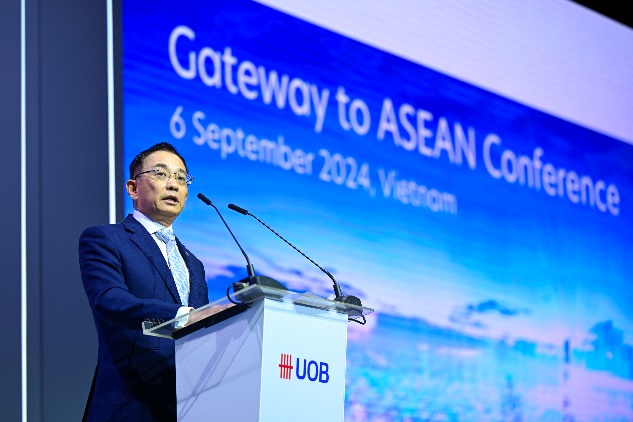
Mr. Victor Ngo, CEO of UOB Vietnam, delivering the welcome address at the conference
Meanwhile, Vietnam’s dynamism and strategic position within ASEAN highlighted the host country’s contributions to the region this year.
Mr. Victor Ngo emphasized, “Vietnam stands out for its position as a gateway to the region. Its strategic location, large and young population, along with business-friendly policies, make Vietnam an attractive destination for businesses looking to tap into ASEAN’s growth potential.”
At the conference, Mr. Phan Van Mai, Chairman of the People’s Committee of Ho Chi Minh City, stated, “The Southeast Asian region, including Vietnam, is affirmed as one of the fastest-growing regions in the current global economy and continues to be a driving force for the world economy.”
“I want to affirm a consistent and persistent orientation of Vietnam and Ho Chi Minh City, which is that we still pursue the trend of peace, friendship, and integration for mutual development with our partners,” emphasized Chairman Phan Van Mai.
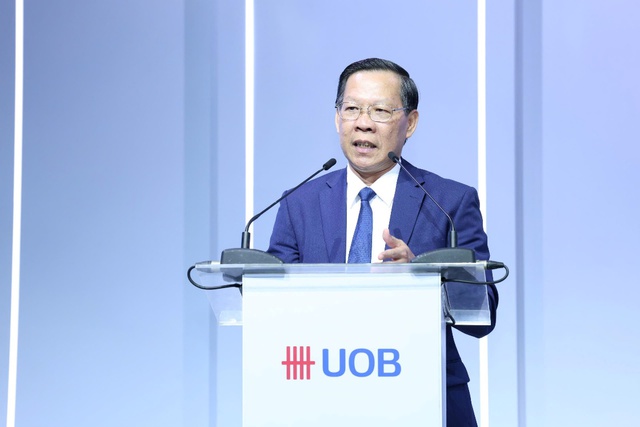
Mr. Phan Van Mai, Chairman of the Ho Chi Minh City People’s Committee, speaking at the conference
The head of the Ho Chi Minh City People’s Committee also affirmed that Vietnam and Ho Chi Minh City are striving to keep up with global and regional development trends in circular and digital economics and green growth. With its role and position, Ho Chi Minh City is always ready to cooperate and facilitate partners’ investment and business operations in the city.
Two Main Drivers of the Region’s Continuous Growth
In the opening discussion session on “Innovation and Sustainable Development: Dual Drivers of ASEAN’s Growth,” the speakers clarified the path for ASEAN to continue its economic growth in the new era.
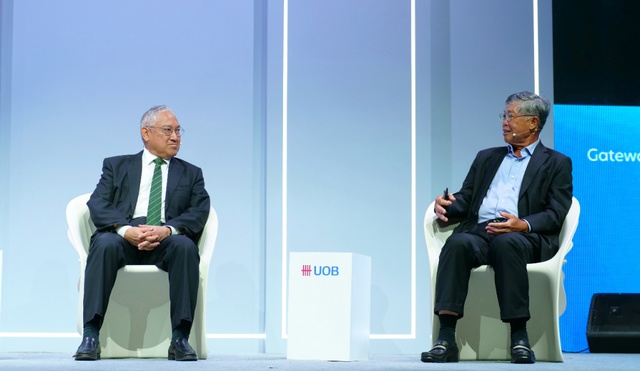
Mr. William Fung, Vice Chairman of Fung Group (Left), and Mr. Goh Peng Ooi, Founder and Chairman of Silverlake Axis (Right), during the opening discussion of the conference
From a business leader’s perspective, Mr. William Fung, Vice Chairman of Fung Group, emphasized that innovation is not just about technology but also about business model innovation, using technology as a tool.
Regarding sustainable development, Mr. Fung stated, “A single enterprise will face challenges in achieving sustainable development, and collaboration is needed from the government and related operating units.”
According to this leader, there are two directions for sustainable development. First, reduce waste generation and avoid producing more than consumer demand; predict consumer needs. Second, increase the speed of supply chain transition with the product’s cycle time.
For his part, Mr. Goh Peng Ooi, Founder and Chairman of Silverlake Axis, believes that the key to success is simplifying everything.
“The reason for technology’s success is its use of sustainable, future-oriented algorithms. Sustainable development involves reinvention, reuse, reshaping, and a genuine commitment to it,” said Mr. Goh Peng Ooi.
ASEAN: The Epicenter of Global Trade Growth
In the second discussion session on “ASEAN: The Epicenter of Global Trade Growth,” Mr. Frederick Chin, Head of Wholesale Banking and Markets, UOB (Singapore), provided numerous examples highlighting ASEAN’s role and position as one of the world’s most dynamic economic regions.
According to Mr. Frederick Chin, the world is entering a new era of globalization driven by four main forces: increasing geopolitical tensions, supply chain disruptions, the urgency of ESG transition, and rapid digitalization. These factors pose significant challenges to businesses and disrupt traditional business models.
However, in this context, he noted that the ASEAN region is a “bright spot” with political stability, a young population with a growing middle class, and a projected GDP of $4.2 trillion, on track to become the world’s fourth-largest economy by 2030.
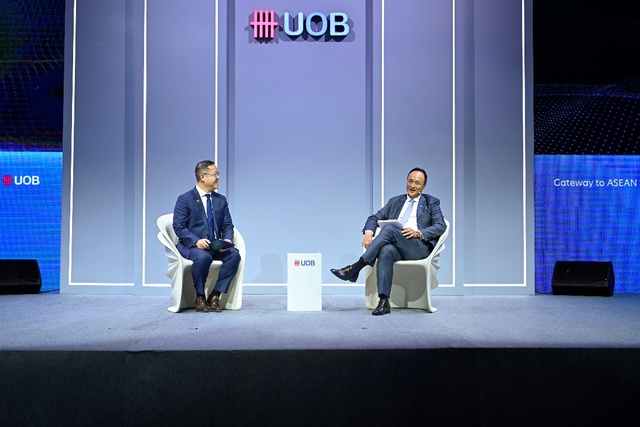
Mr. Frederick Chin (right), Head of Wholesale Banking and Markets, UOB (Singapore), shared about the great opportunities in ASEAN in the coming time
With trade and global growth expected to increase in the coming years, a clear trend is emerging: ASEAN is becoming an FDI destination as a strategy to diversify supply chains and build resilience around them. In 2023, ASEAN was the second-largest FDI destination with $226 billion, just behind the US ($310 billion) and far ahead of China ($160 billion).
With the most extensive network in the ASEAN region, Mr. Frederick Chin affirmed that UOB is strategically positioned to help businesses there, connecting them between ASEAN, China, and the rest of the world.
Over the past decade, UOB’s FDI advisory unit has advised nearly 4,500 companies on expanding overseas, especially in ASEAN. The bank has also invested in an integrated supply chain platform to connect businesses throughout the ecosystem within the supply chain’s value chain. UOB has also established a dedicated ESG task force with experts in the field to advise clients on navigating the ESG transition.
“Today, we not only provide banking services to individual businesses. We serve the entire ecosystem along the supply chain from buyers to sellers,” shared Mr. Frederick Chin.
While ASEAN is a promising economic bloc, the region is associated with diverse cultures and distinct regulations, creating a challenging environment. “This is why UOB has a unique advantage in serving customers investing in this region. We believe in ASEAN’s potential, and we are here for the long term and want to partner with all businesses as they build their future and make their mark in ASEAN,” Mr. Frederick Chin further emphasized.
Seizing Opportunities in ASEAN through Vietnam
In the parallel thematic discussion sessions, delegates shared the view that Vietnam is not only the region’s economic bright spot but also a crucial link in the global supply chain. Vietnam is also a preferred destination for corporations and businesses looking to diversify their production.
Through practical experiences, Mr. Alexander Ziehe, CEO of Viessmann Southeast Asia and Oceania, emphasized that his company easily exports goods produced in Vietnam to markets such as Cambodia and Thailand. Higher-segment products also easily reach Europe and Australia through Vietnam’s FTAs.
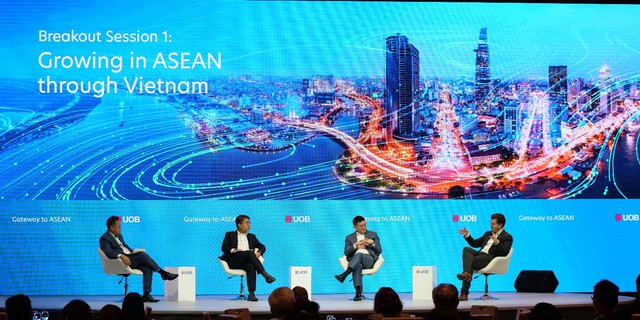
Thematic discussion session on “Developing in ASEAN through Vietnam” with sharing from representatives of foreign-invested enterprises in Vietnam
In these parallel discussion sessions, the speakers also shared experiences on issues such as sustainable innovation and supply chain management.
This year’s conference also became a venue for domestic and foreign companies to meet, exchange ideas, and seek potential business partners in the business matching segment through direct exchanges.
With its extensive trade network with businesses across the region, UOB is ready to support direct connections with large and small enterprises across supply chains and sectors, promote investment, and provide comprehensive financial solutions to drive the growth and expansion of businesses in the region.
The Historic Neighboring Duo: Vietnam’s First Two Centrally Governed Cities
Recently, the Government Office announced the conclusion of Deputy Prime Minister Nguyen Hoa Binh on the determination of administrative boundaries between the two localities.
India Imposes Maximum 30% Duty on Certain Steel Products Imported from China and Vietnam
The steel products in question, originating from China and Vietnam, are subject to a taxing period of five years.

